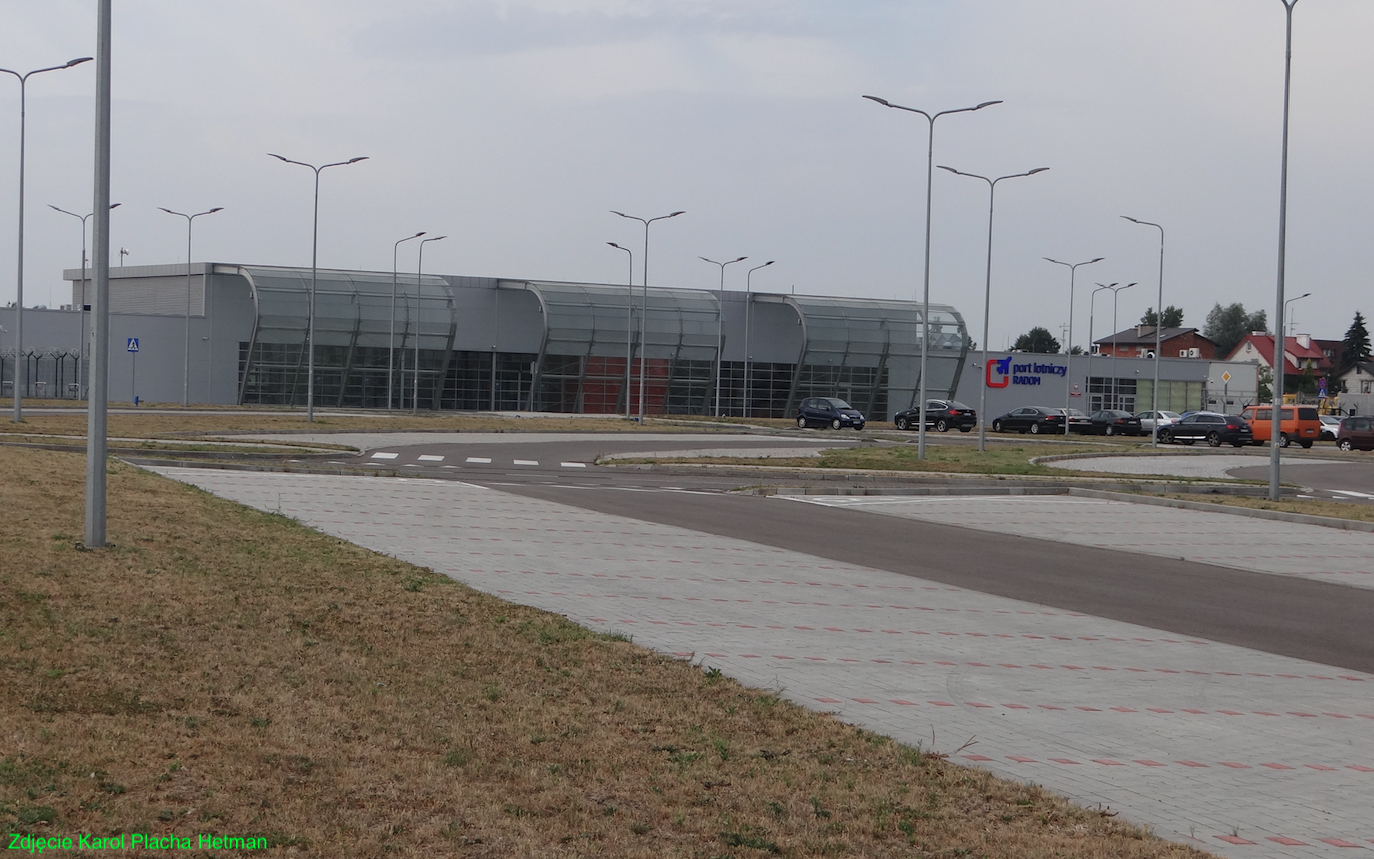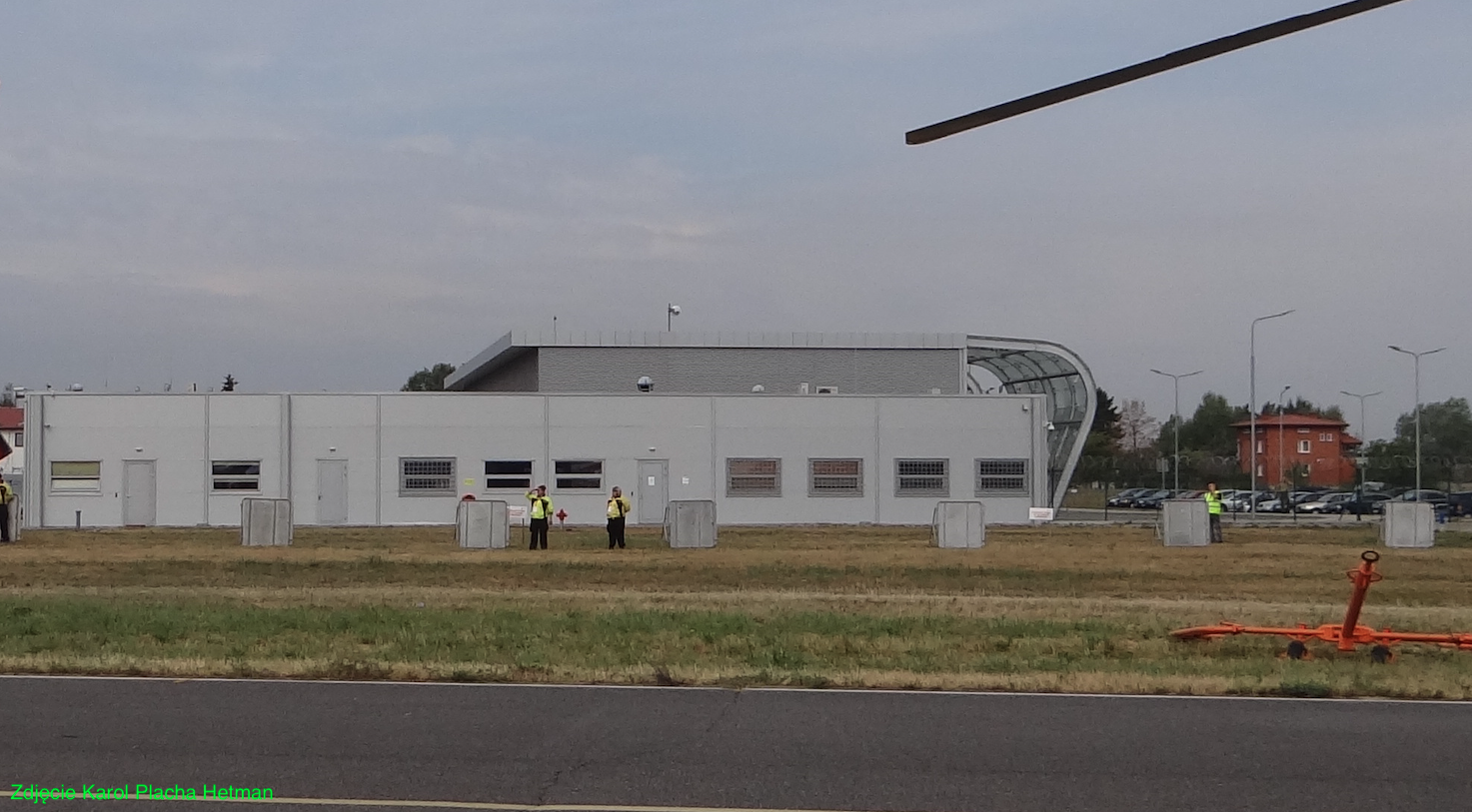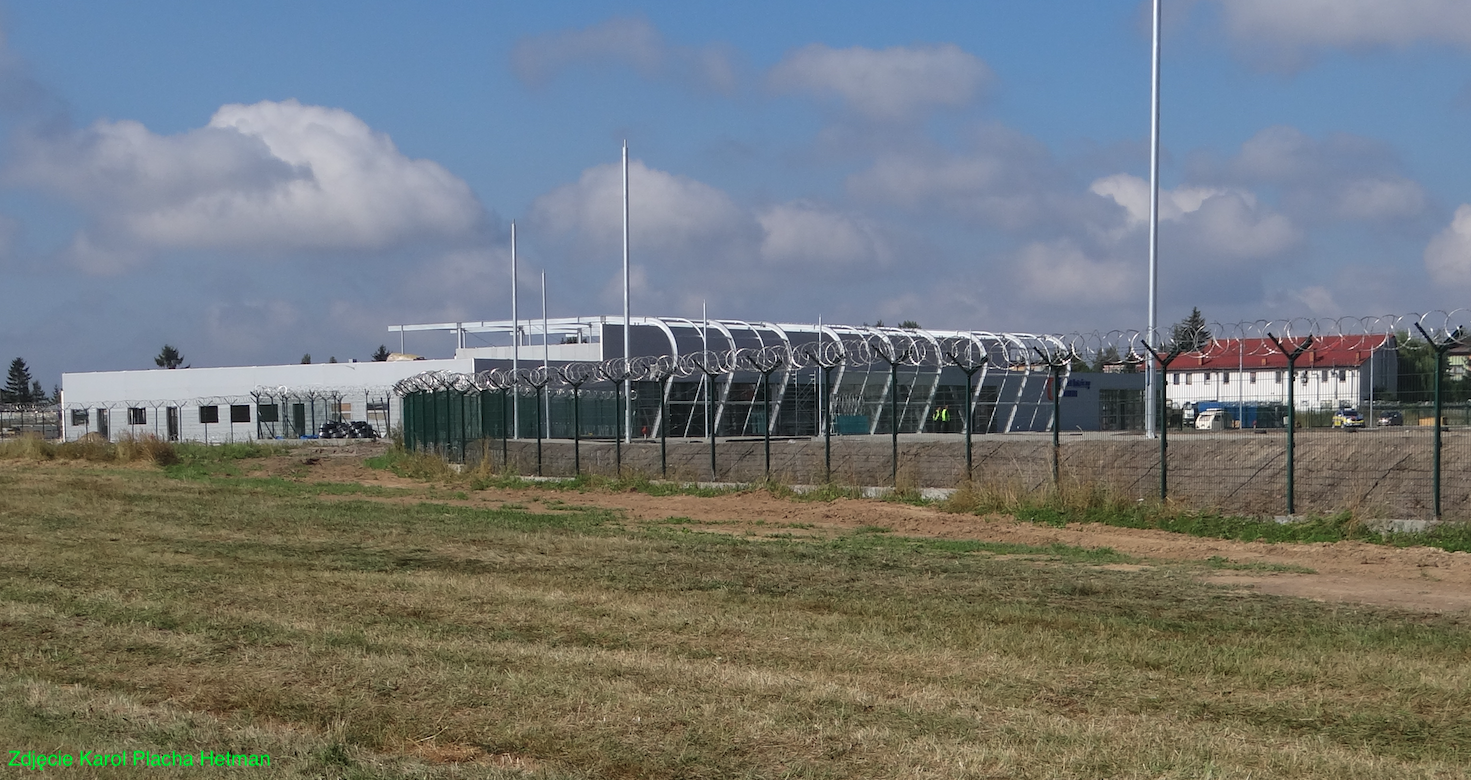Radom 2014-05-24
Warsaw - Radom Airport.
Geographic coordinates: 51.388N 21.212E. Elevation 186 m.


For over 20 years there have been plans to use Radom Airport for air transport, both passenger and cargo. Politicians were particularly active when local government or parliamentary elections were approaching. At that time, politicians promised to launch a passenger terminal. The company Port Lotniczy Radom S.A. was established.
It should be remembered that Okęcie Airport is already at the end of its transport services. There are restrictions at Okęcie airport and there are no flights at night. In addition, developers would be happy to occupy the take-off area after the Okęcie airport, which will happen sooner or later.
General assumptions for the Port of Warsaw - Radom: Runway with a precision instrument approach Cat.1 in the direction of 25. IFR, VFR, General Aviation and state aviation flights. Working time: initially 16 hours and eventually 24 hours a day. Air traffic service by an authorized body, i.e. the Polish Air Navigation Services Agency. Airport operator: civil entity - Port Lotniczy "RADOM" S.A. Handling operator: daughter company of the airport operator. The ICAO category of rescue and fire protection, initially VI, and eventually VIII, will require the construction of an LSP watchtower and the purchase of rescue and firefighting vehicles. The new watchtower is to be built near the GDL (TWR). Equipment for winter and summer airport maintenance: requires purchase. Equipment for winter and summer aircraft, passenger and cargo handling: requires purchase.
Due to the limited carrying capacity (PCN 33/R/B/X/T) of the taxiways (DN) and their too small dimensions (width 12 m), it is necessary to first expand one taxiway to a width of 23 m (with 38 m bands) and capacity of PCN 60, and then the entire network. The dimensions and poor load-bearing capacity of the existing PPS, with the exception of the western PPS (PCN 58/R/B/X/T) and unsuitable dimensions for civil aircraft, make it necessary to build a civil slab with an area of approximately 50,000 square meters and a load-bearing capacity of PCN 60. It could be built in in the place of the present allotment gardens occupying the area of the airport. The horizontal markings of shared and civil airport pavements should be adapted to the provisions of ICAO Annex 14. The runway (RWY), landing approaches and the DK system should be equipped with a complete Cat I navigation lighting system, eventually Cat II. A new/current military meteorological cover system compliant with ICAO for the airport should be supplemented/purchased, including at least automatic measurements of RVR and pavement condition. The load-bearing capacity of the RWY at the ends is sufficient, but ultimately, an extension to 2,700 m should be taken into account, provided that the requirements for protecting approaches from development and meeting environmental protection conditions are met.
It is necessary to equip the RWY in direction 25 with an ILS category instrument landing system, such as the approach lighting system. Construction of a new TWR traffic control tower with systems and technical equipment, including aviation equipment, should be envisaged.
Passenger traffic should be handled in accordance with the relevant IATA level C standards, which will require the construction of a passenger terminal typical for international airports of a modular nature and the area of the first stage of 5,000 square meters with expansion to 10,000 square meters. In order to speed up the launch of the airport, the purchase of a ready-made temporary terminal is being considered, the launch of which takes a maximum of 6 months. Its capacity should amount to 0.5 million passengers per year.
Safety requirements - Annex 17 ICAO - will make it necessary to adjust the fence of the airport, especially the civil part (in the first place) and eliminate access by unauthorized persons (neighborhood of allotments and garages).
Airport services and companies operating at the airport will enforce the construction of a multi-functional building (offices, warehouses, workshops, technical facilities for equipment maintenance) with an area of 5,000 square meters, along with a yard for airport equipment and handling equipment as well as fuel tankers.
Receipt and dispatch of Cargo is conditioned by having a special facility (cold stores, customs clearance, security procedures, forwarders, quarantine) with an area of 4,000 square meters.
Due to the necessary travel of passengers from the catchment area of the Radom airport (about 100 km), especially for low-cost flights - LCC, it will be necessary to urgently build the first car park for 1,000 passenger cars.
On May 30, 2011, the City Council of Radom entered the airport into the local spatial development plan. On September 16, 2011, the Civil Aviation Authority issued a permit to establish a civil airport. In May 2013, the airport received an environmental decision. In September 2013, the Port was registered with the Civil Aviation Authority.
Radom Airport received the reference code 3C (ultimately 4D) and can handle Boeing B-737 and Airbus A-320 aircraft. Thanks to them, Radom gained access to the Schengen area, Eastern Europe, the Middle East and North Africa. Since October 2013, the airport has been servicing General Aviation aircraft. In the spring of 2014, the first scheduled connections were launched.
The history of the creation of a civil and communication airport.
On May 30, 2011, the City Council of Radom entered the Airport into the spatial development plan. On September 16, 2011, the Civil Aviation Authority issued a permit to establish a civil airport. In May 2013, an environmental decision was issued. In the period from June 2012 to September 2013, investment works related to the airport's infrastructure were carried out. In November 2013, the Radom Airport was registered with the Civil Aviation Authority. In 2014, the first Generał Aviation planes were accepted to test the airport's infrastructure. In May 2014, it was planned to launch the first scheduled transport connections.
However, the implementation of the program took longer. On May 14, 2014, the certificate of the public use airport was approved. The entry into the register of airports was finally made on May 29, 2014. In May 2014, the assembly of the temporary terminal, relocated from Łódź, was completed; Lodz - Lublinek.


Basic information - Radom Airport.
IATA - RDO code. Basic aircraft: Airbus A.320, Boeing B.737. Capacity of 550,000 passengers per year. The area of the terminal is 3,000 square meters. The terminal is temporary. A container-type terminal that was moved from Bydgoszcz. Runway length (RWY) 2,000 m.
Address - Radom SA Airport, 86 Żeromskiego Street, 26-600 Radom.
Communication traffic.
The first communication plane from Riga, Air Baltic, landed in Radom in September 2015. Then, from September 2015 to October 2015, Czech Airlines aircraft flew from Radom to Prague. From April 18, 2016 to October 29, 2017, services were provided by Sprint Air.
Written by Karol Placha Hetman
